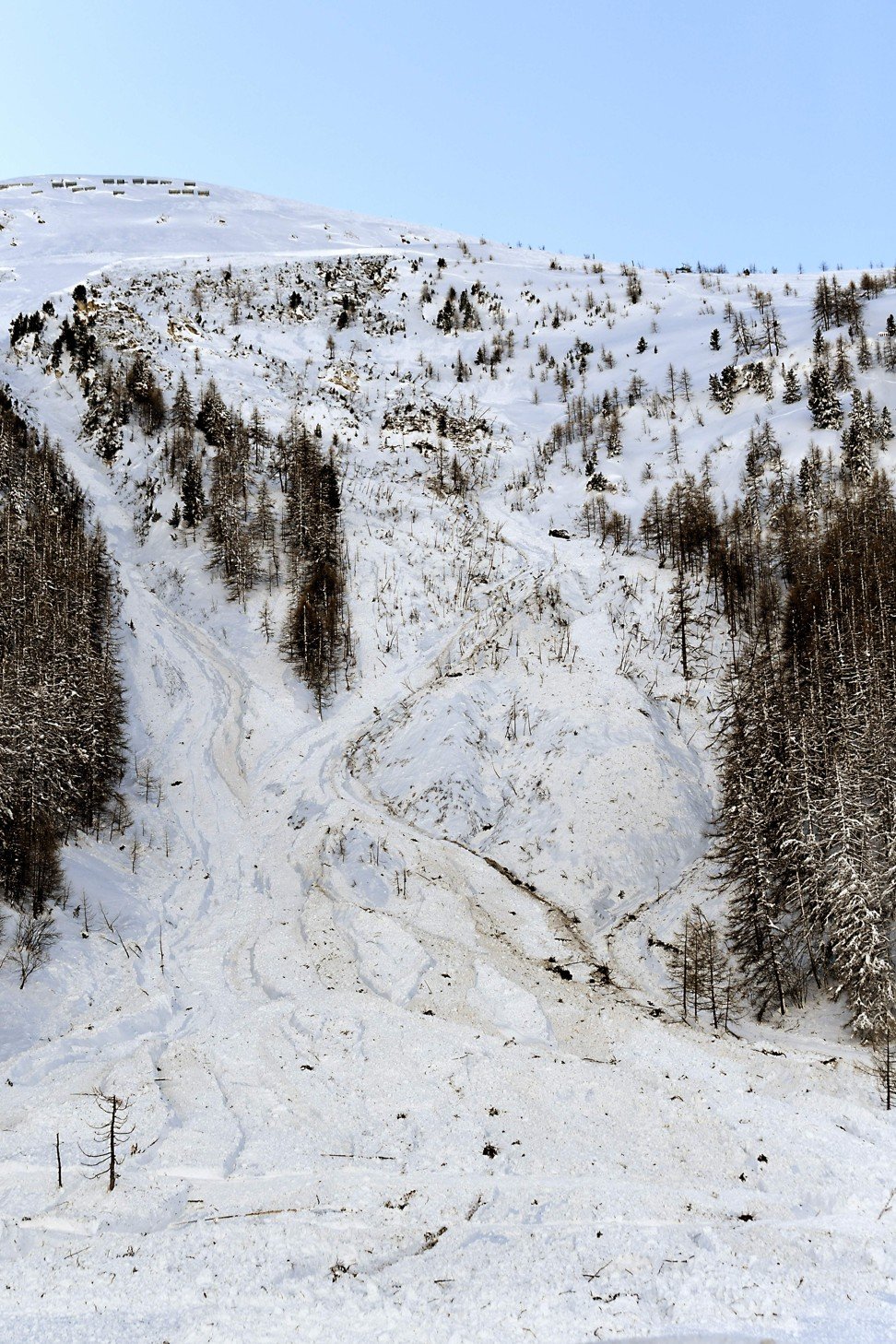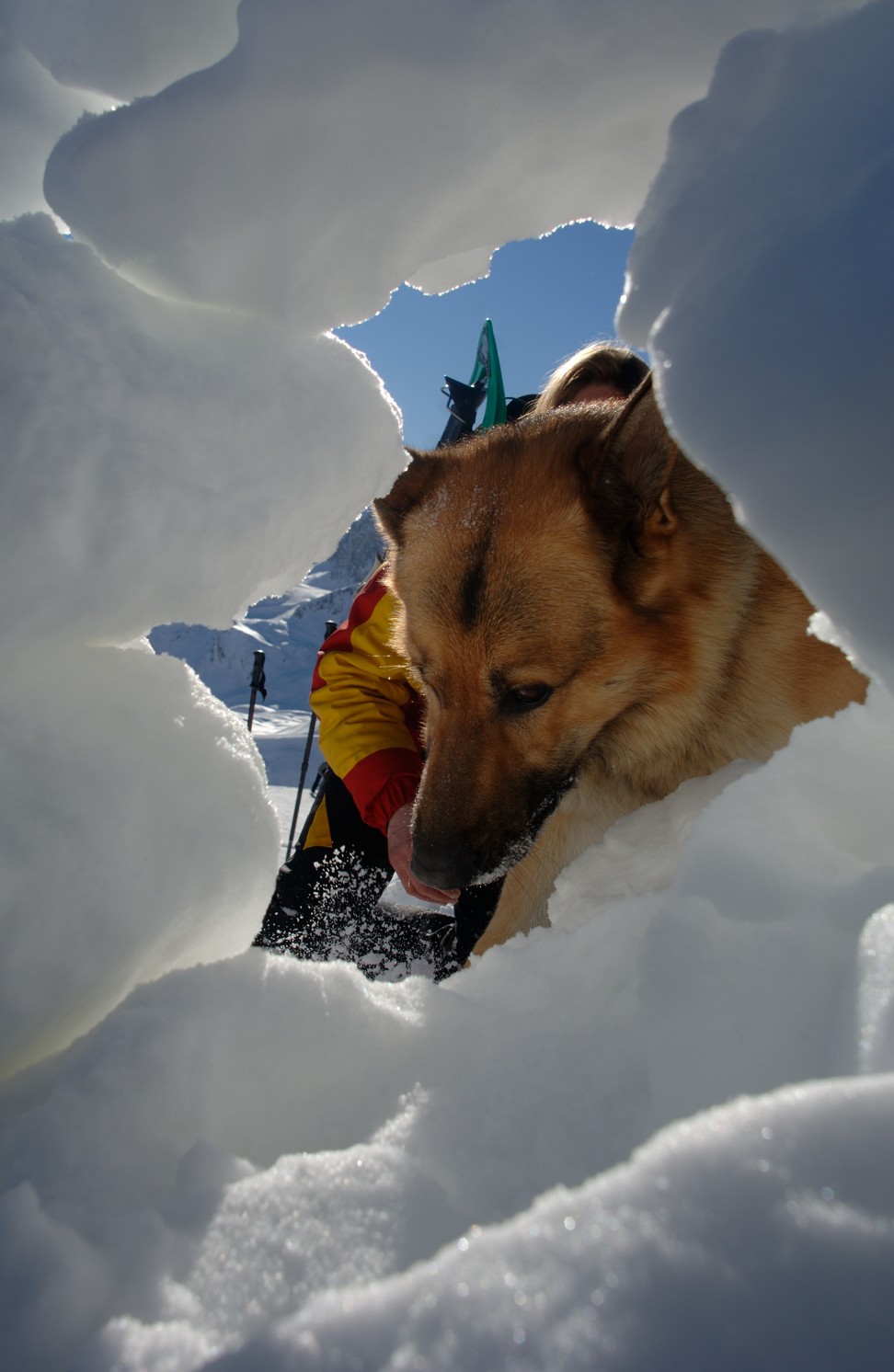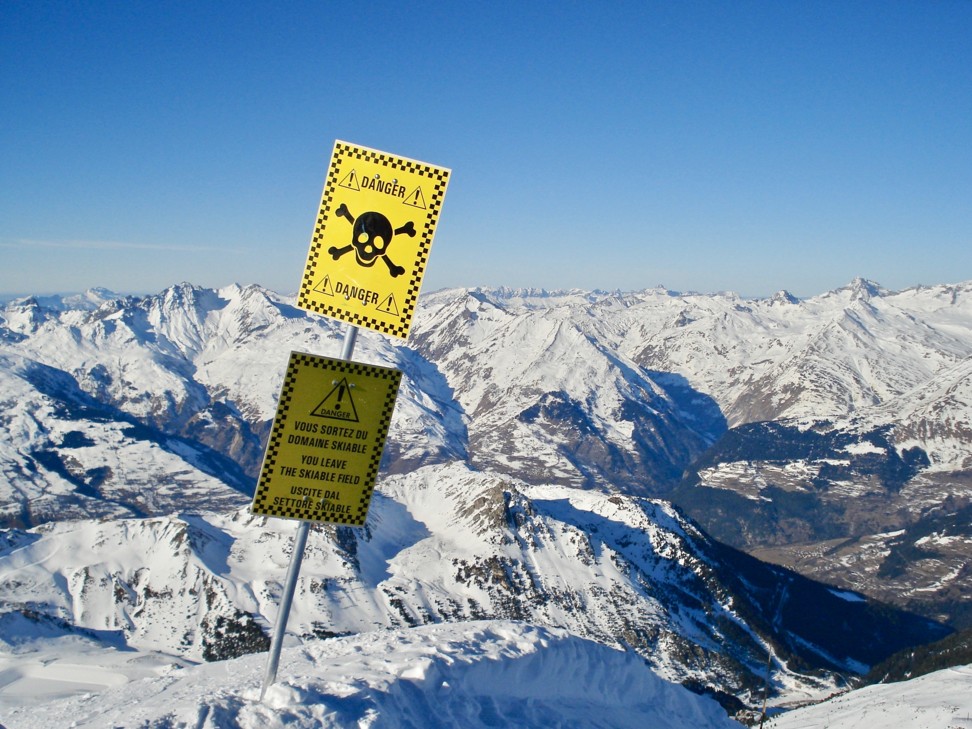
Avalanche dogs: up close with the canine lifesavers as they train with their masters in the French Alps
- If you’re trapped beneath tonnes of snow by an avalanche, a dog is your best chance of being rescued. We catch up with 15 of them and their masters in training
- A dog can cover in 30 minutes an area of snow it would take 20 people with long poles four hours to search – vital when survival is a race against time
I am buried beneath a metre of snow above the ski resort of Les Deux Alpes in France in a cold, silent, friendless world. Suddenly there’s a scuffling sound, followed by a pair of black paws frantically excavating the snow, as Icare the avalanche dog bursts through to my rescue.
Fortunately, this is just an exercise – part of a two-week training programme for avalanche dogs and their handlers organised by ANENA, the French national association for the study of snow and avalanches. Were it for real, Icare could very easily be the difference between life and death for an avalanche victim.
He is here with his handler, Rudolf, and 14 other dog teams from various parts of the French Alps and the Pyrenees to train to become effective life-saving units for avalanche victims.

Unlike most ski resorts, some of the easiest slopes to ski in Les Deux Alpes are on the glacier – which also offers magnificent views over the jagged peaks of the Ecrins National Park, as well as high-altitude dining at the Refuge des Glaciers – so everyone from novice to expert can get to see the dogs at work.
Avalanche deaths in the French Alps in recent years have remained steady at an average of around 30 per annum, although scores more people are caught in avalanches and suffer injury each year; on average around 200 people get caught in avalanches there annually, and each winter avalanche dogs rescue people buried in snow who are not wearing avalanche transceivers (these send a location signal to rescuers on the surface).

A trained avalanche dog can search one hectare of rough, snowbound terrain and/or avalanche debris in around 30 minutes – it would take 20 humans with avalanche probes around four hours to cover an equivalent area.
The speed with which an “avy dog” can locate an avalanche victim is vital in a rescue, since around 90 per cent of avalanche victims will survive if recovered in the first 15 minutes after being buried under snow, provided they haven’t suffered fatal trauma. This drops to just 30 per cent after half-an-hour and only 10 per cent after two hours.
The dog is trained to search for “pools” of human scent given off by buried victims – a still conscious victim is likely to be panicking and even sweating despite the cold, giving off a stronger scent. The dog will bury its snout and head into the snow to try to locate the scent more accurately.

If the scent intensifies, the dog will start to dig and human rescuers will come along and assist with shovels; if the scent becomes weaker the dog will work outwards from the area.
The rescue dogs at Les Deux Alpes are primarily border collies and Belgian and German shepherds – along with Labradors and golden retrievers these are the main breeds used for the job. All are male and aged between one and two years, although their initial training can begin when they are just a few months old (only male dogs are trained, as the presence of bitches can distract the dogs).
Guy Anciaux, ANENA director, explains that after initial training on their local ski slopes the dogs and their owners attend the two-week course in Les Deux Alpes. “The dogs are not aware they’re working,” he says. “For them it’s all fun.” This is obvious by the barking, yelping and frantic tail wagging that precedes any exercise.

The traditional rescue dog of the mountains, the St Bernard, is no longer used for mountain rescues. They were bred by the monks of the St Bernard Hospice on the Grand St Bernard Pass, on the Swiss-Italian border in the Alps, and one dog called Barry is reported to have saved the lives of up to 100 people.
However, these dogs were similar in size to a German shepherd rather than the much bigger modern-day St Bernard; breeding programmes over the last couple of hundred years have resulted in today’s St Bernard being much larger, as well as having masses of hair, which attracts snow and ice – hence their unsuitability for work as rescue dogs.
There is more to avalanche dog training than sniffing out buried journalists, of course – the dogs have to learn to ride on ski lifts and snowmobiles and in helicopters, for instance – but for the skiers and snowboarders looking on as the training continues there is a certain reassurance in knowing that these boundlessly energetic and enthusiastic creatures are there to learn how to be, quite literally, a man’s (or woman’s) best friend should the worst happen.

